Arminia Bielefeld had a very good campaign in the 2019/2020 edition of the 2. Bundesliga, the team managed to end the season in 1st place and win automatic promotion to the Bundesliga. Having won the title of the 2nd tier in Germany, Bielefeld are now looking to establish themselves in the country’s top division and for that they need be able not only to get new players in and improve the squad, but also to keep their best players that gave the club a lot and helped win promotion.
Marcel Hartel was a key player in Arminia Bielefeld’s journey to win the 2. Bundesliga last season, the 24-year-old German midfielder was the team’s top provider with 11 assists, a number that also puts him as the joint top provider in the league last season. Back to the Bundesliga after 3 seasons in lower divisions, Hartel looks like a player that still has a lot to offer to his team and will certainly be an important part of it in the new season that is already underway.
In this scout report we’ll take a look at Marcel Hartel’s statistical profile in order to determine his output as well as some aspects of his style of play. A comparison of Hartel’s data with other Bundesliga midfielders will give us a good comparison and, despite some aspects that need to be taken into account, will provide a first glance at how he will adapt to a higher level. To complete the scout report we will do a tactical analysis of Hartel’s actions in the different moments of the game and see how he adapts to tactics, positions and more.
Player Profile
Marcel Hartel is a 24-year-old midfielder who can fulfil various roles across the middle of the park. In the 2019/2020 season Hartel played mostly as a left-central midfielder in a double pivot or as an attacking midfielder but he is able to play on both sides of the pitch comfortably.
In the image below we can see Marcel Hartel’s heat map for last season, the map highlights the areas of the pitch where he performs the most actions and, therefore, where he operates most times.
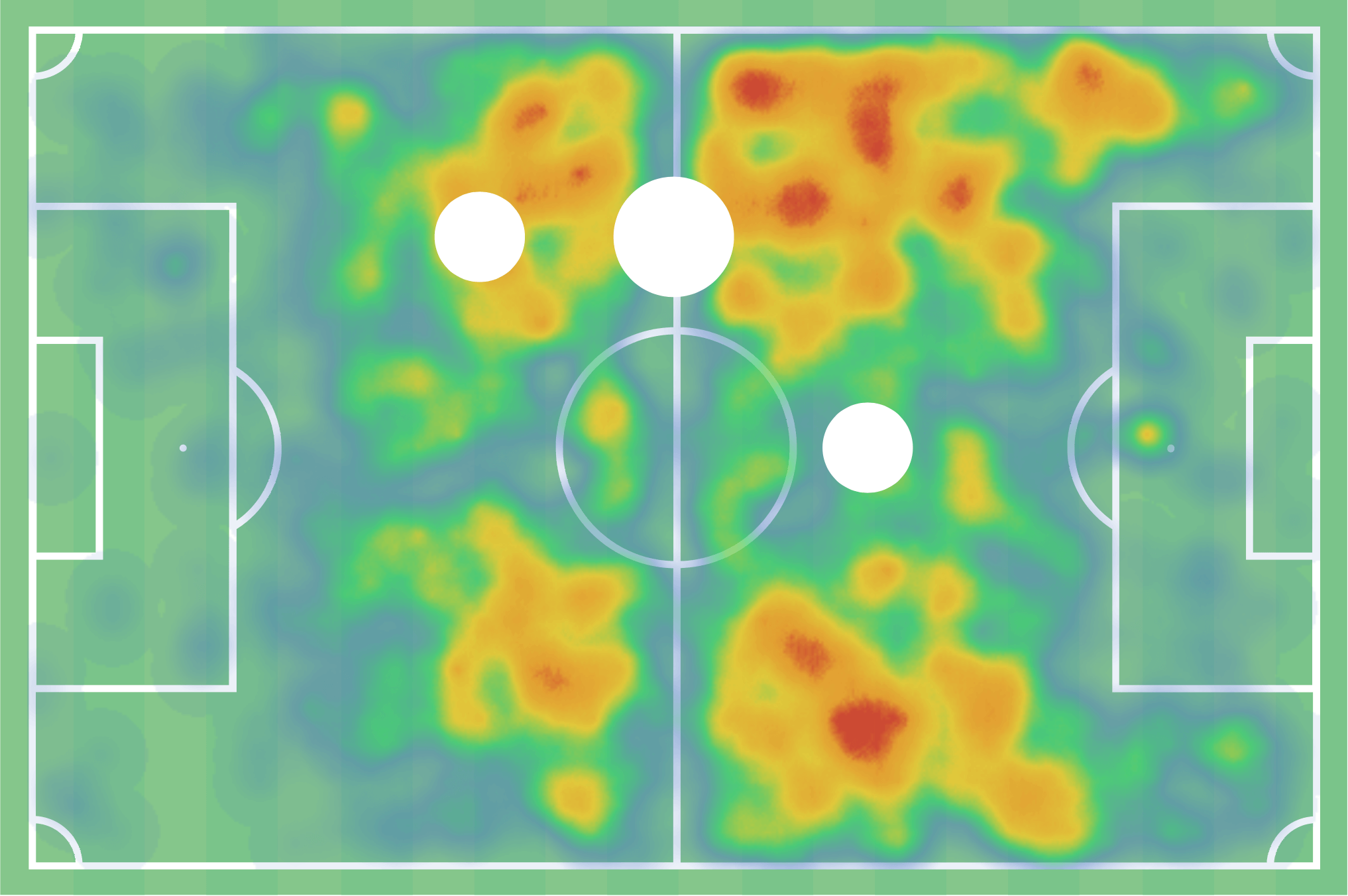
The heat map shows us how Hartel is involved in the various stages of his team’s build-up phase, depending on his position and side of the pitch he is playing, Hartel is seen dropping deep to start the build-up phase, combining to progress the ball up the pitch or even receiving the ball in between the lines to face the opposition’s defensive line and create danger. He is what we can call a playmaker in general and, depending on his position, he can be a deep-lying playmaker or a more advanced one but usually drifting to one side of the pitch. The ability to fulfil different roles and play in different sides of the pitch comes not only from Hartel’s skill and intelligence, but also from his ability to use both feet very comfortably, meaning he is able to execute actions with better angles from different areas of the pitch.
In order to have a better understanding of Hartel’s abilities and style of play, we took a look at the data. Calculating percentile ranks for some key stats allowed for a comparison with other defensive, central, and attacking midfielders from the Bundesliga. While this is not a completely realistic comparison, due to the difference in quality and style between 2. Bundesliga and the Bundesliga, it allows us to have a picture of what could potentially be Hartel’s ranks in the Bundesliga this season. The comparison should always be seen having that difference between the leagues in mind, however, it gives us a glance of how Hartel’s statistical profile fits in his new league.

An analysis of the bar chart shows us how Hartel has the profile of a playmaker and how good was his output last season playing for Arminia Bielefeld. The German scores high in most metrics with special focus on chance creation contribution per 90, dangerous passes per 90 and dangerous crosses per 90. This means that Hartel is able to create chances for his teammates quite often, in fact, he averaged one of the highest numbers in terms of key passes per 90 in the 2. Bundesliga last season. It also means that Hartel is very capable on his deliveries to finishing areas as the high rank in dangerous passes and crosses per 90 clearly shows, numbers that are highly influenced by the German’s style of play but also by his tendency to drift to the half and wide spaces when playing in midfield. The metric “dangerous passes per 90” was created adding passes to the final third per 90, deep completions per 90, and passes to the penalty area per 90 and the metric “Dangerous crosses per 90” was created by adding crosses to the goalie box per 90 and deep completed crosses per 90. In a similar fashion, the metric “chance creation contribution was created by adding third assists per 90, second assists per 90, assists per 90 and key passes per 90.
Offensive Play
Build up starter: finding space and moving up the pitch
When his team is attacking Hartel’s positioning and movement to find space and receive the ball is different depending on his position. When playing as a left/right central midfielder on a double pivot he drifts to either side and drops deep to help his team in the first build-up phase. He knows that by dropping deep he will get more time and space on the ball allowing for better decisions and execution.
Hartel is not a defensive midfielder and the reason because he is deployed in a double pivot is because of his technique and ability to carry the ball forward, either by himself, or combining with teammates. Playing in a double pivot Hartel was given more freedom to go up the pitch and play a part in the attack while his midfield partner would stay back a bit more to give cover, this means that Hartel’s role is not to play as a defensive midfielder but to play as a deep-lying playmaker when the team is building its play from the back and, once the ball gets into the final third, his role shifts to more of an advanced playmaker and he is tasked with providing passing lanes and, if possible, that final key pass or cross to get a teammate through on goal.
On both phases of the play, when Hartel plays deeper to start the build-up and when he plays higher up the pitch to create superiority and help to create chances, he usually operates in one of the sides of the pitch occupying the half-spaces most of the time with some freedom to move wider or more central if needed. This is perfectly represented in the heat map we saw above, the areas with the most actions are the half-spaces on both sides of the pitch starting in the defensive and moving up to the final third.
In the image below we can see Marcel Hartel in a deep position providing a passing lane to the centre-back from his team, he scans the pitch over his shoulder to detect press and quickly receives the ball on the half-turn. He then plays the ball to a teammate in between the lines (out of picture) and starts to move up to incorporate himself in the attack.
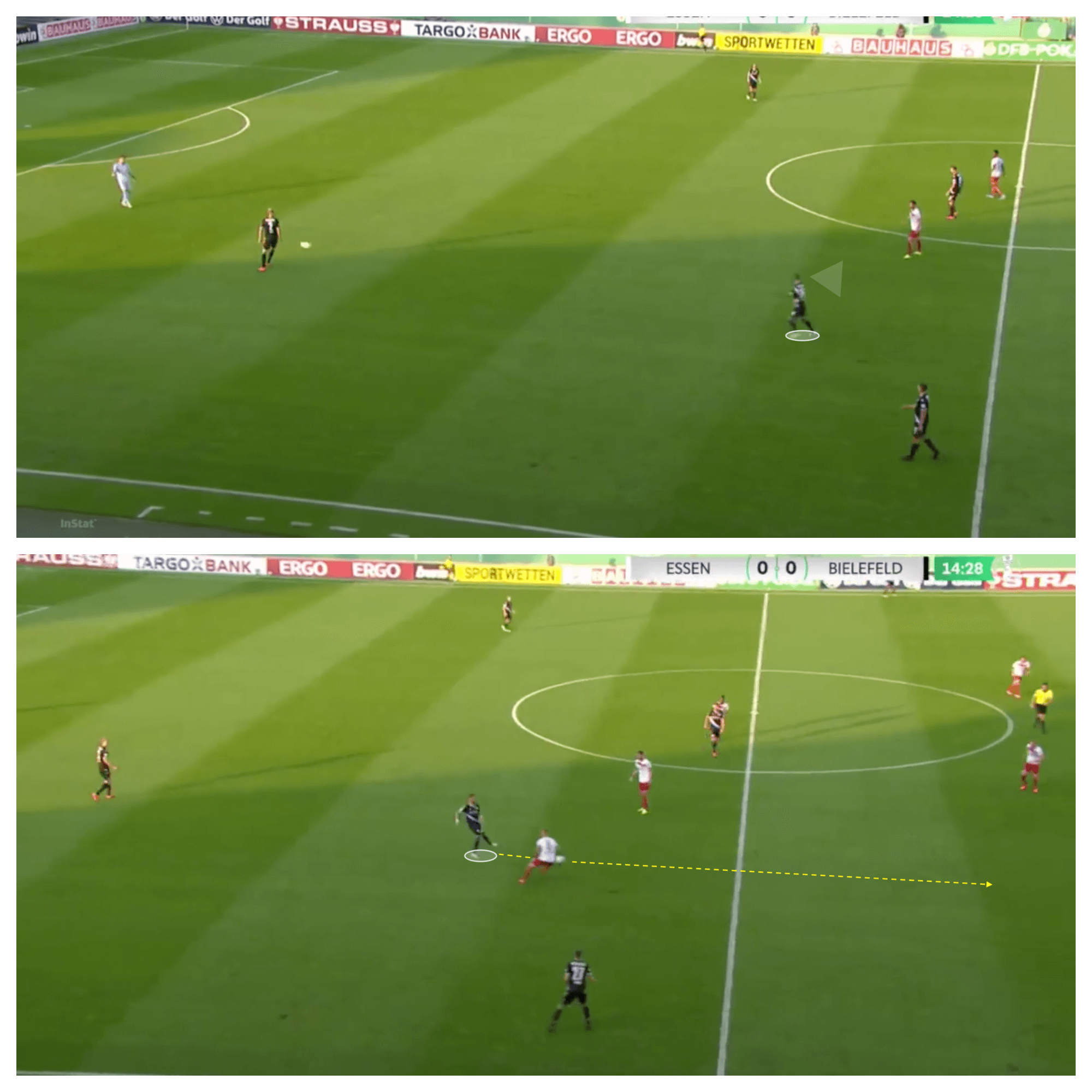
Advanced playmaker
Differently to when Hartel plays as a part of a midfield duo, his role as an attacking midfielder incorporates the passing combinations and the search for the last pass in the final third that is also present when Hartel moves up the pitch in his double pivot role with a different way and positioning to find the space to receive the ball.
When Hartel plays as an attacking midfielder he looks to find space to receive the ball in between the opposition’s midfield and defensive lines. Receiving the ball in tighter spaces and surrounded by opponents is a much different task than receiving the ball deep in his own half, nevertheless, Hartel possesses the first touch and the awareness to be able to find the space and receive the ball on the half-turn so he can then face the opposition’s defensive line and try to provide the final delivery. Contributing to his success in operating in the space in between the lines is the fact that Hartel has the habit of scanning the pitch before he receives the ball so he can be aware of who is pressing him and where there is space for him to drive or pass the ball into.
In the image below we can see Marcel Hartel looking for space in between the lines to receive the ball. He scans his back before the pass his made and recognises he has space to receive the ball on the half-turn and drive the attack forward.
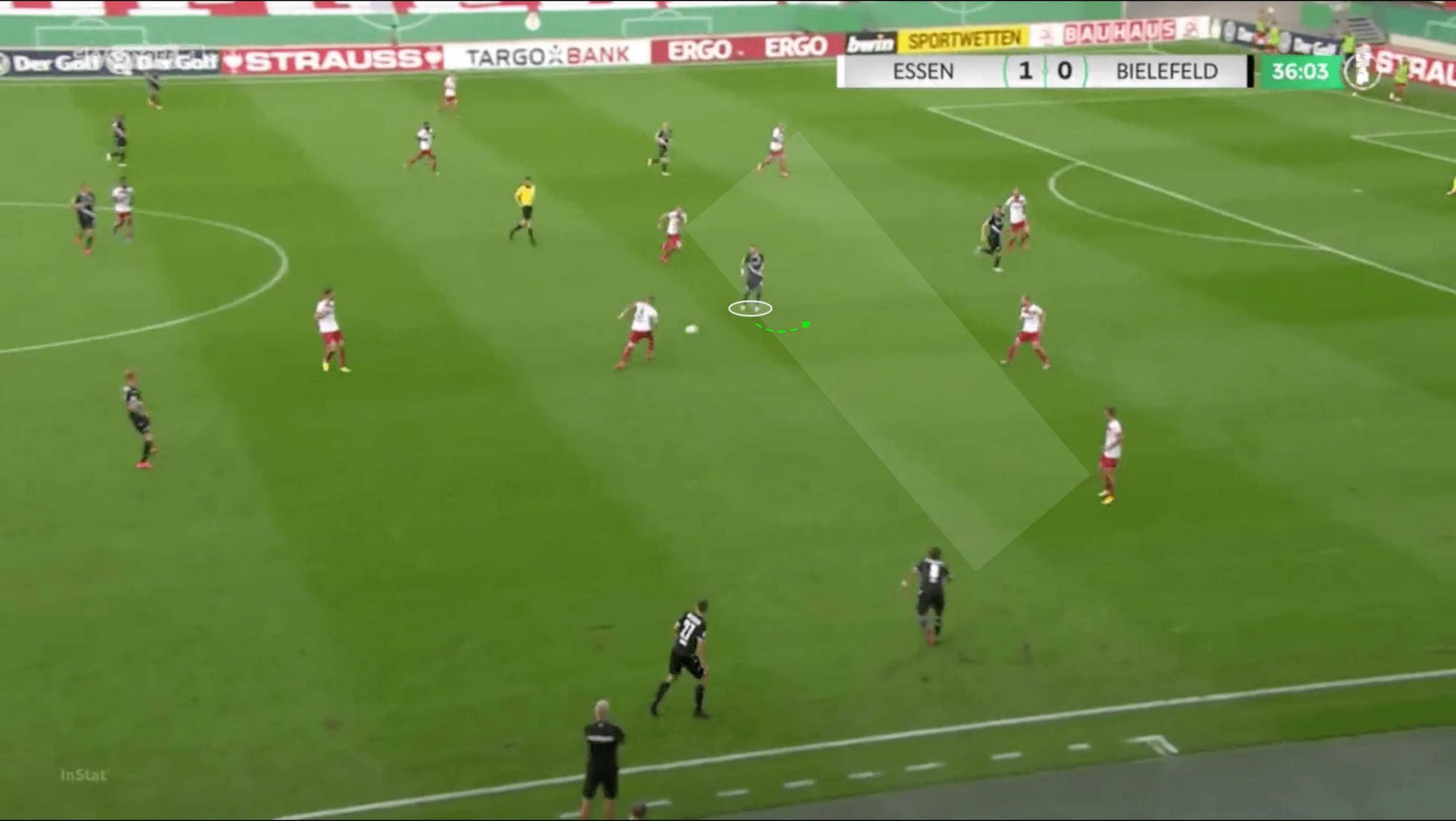
Creating Chances
When Hartel is able to receive the ball in the final third, usually on the half-spaces or in a more central area if he is playing as an attacking midfielder, is when he is able to really shine and make the most of his skills. The German has a very good ability to play the last pass and get team-mates through on goal or to play pinpoint crosses that pretty much leave nothing for the striker to do but to guide the ball into the back of the net. A big part of Hartel’s ability to provide great deliveries into finishing areas has to do with his ability to play with both feet comfortably, this allows Hartel to be faster to execute and to have more viable angles and passing lanes but also adds an element of unpredictability to his game because opponents will always be in doubt in regards to the direction he is going to run, pass or shoot to.
In the image below we can see Marcel Hartel coming inside after receiving the ball in the left half-space, he sports the run of his teammate as well as the space available and plays a simple yet key pass to get him through on goal.
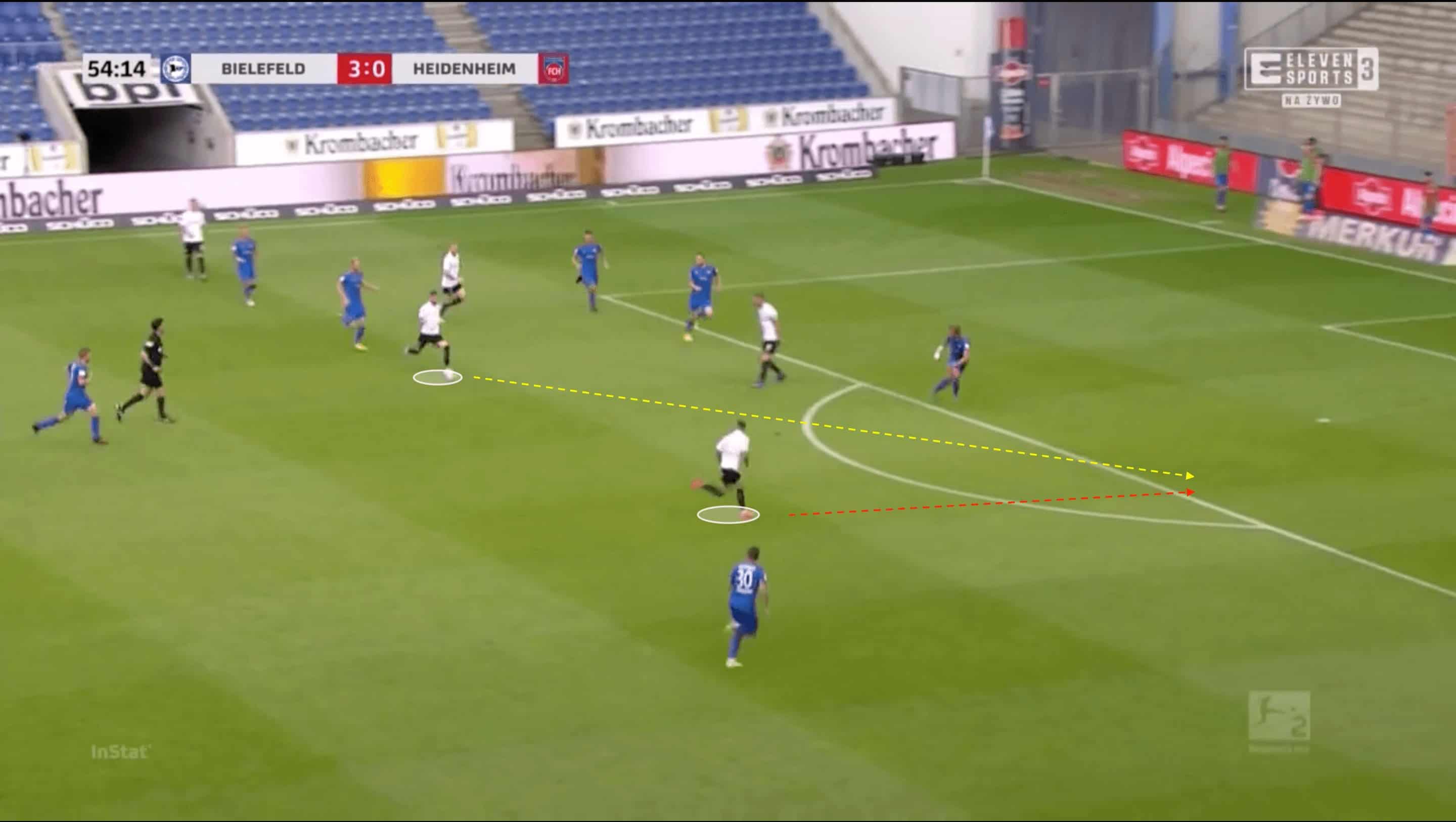
Because Hartel operates in the half-spaces a lot crossing is a big part of his game and something he does very well. Making use of his great vision and technique Hartel is able to deliver powerful crosses in behind the opposition’s defensive line or right to the head of his teammates that are in the penalty box. Hartel also has the advantage of being able to cross with either feet, allowing him to vary the crosses between in swingers and outswingers and adding another element of surprise to his game
In the image below we can see Hartel in possession in the half-space, he spots the run of his teammate on the far post and delivers a pinpoint cross for him to head it into the back of the net.
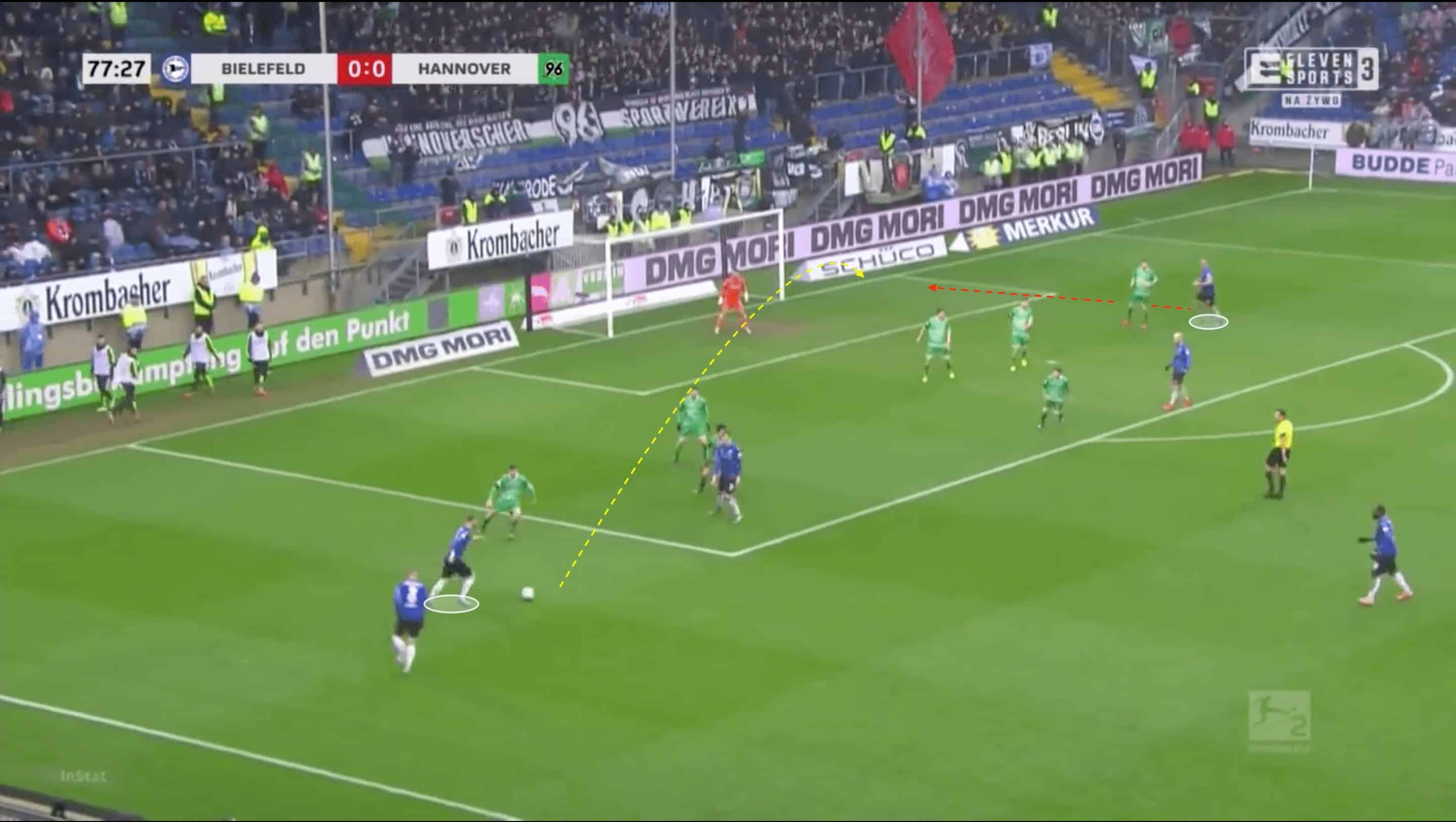
Good evidence of these types of actions in Hartel’s game can be found on his penalty area deliveries map. The map shows the deliveries into the penalty area and labels them by the type (pass, cross, carry), this allows us to see the areas from which deliveries come and where they go to giving us a good picture of Hartel’s preferred areas and method to deliver the ball into finishing areas.
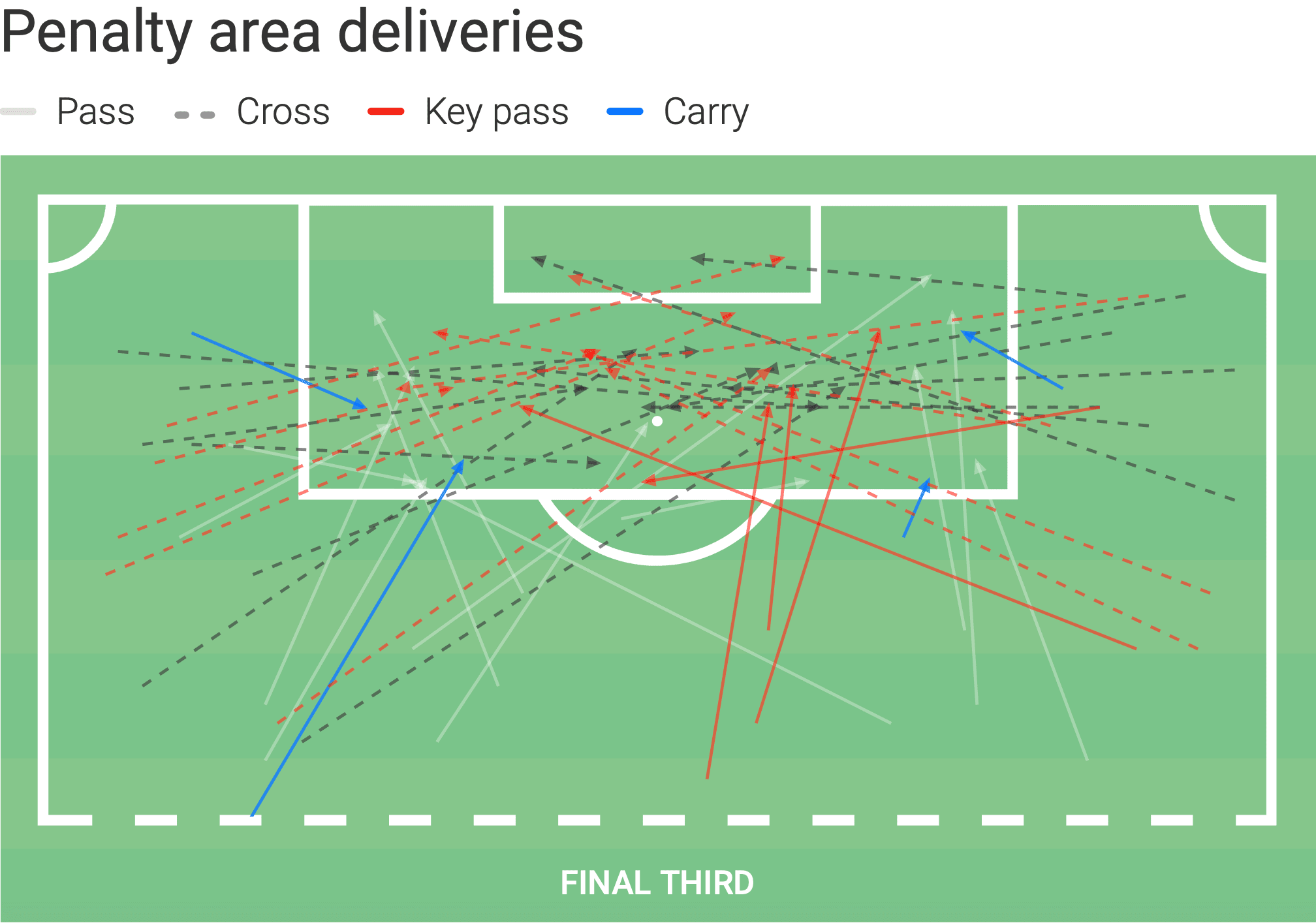
An analysis of the map shows us how most deliveries come from in and around the half-spaces with some coming from wider areas as well. It is also easy to see that a lot of key passes form the half-spaces area actually crosses ( – – -) and that is consistent with what we saw about Hartel’s tendency to cross when he is involved in the attack in those type of areas. Furthermore, the focus on delivering the ball to his teammates in better positions instead of trying to get into those positions by himself is also present in this map in the low number of times Hartel tries to carry the ball into the penalty area himself.
Conclusion
This scout report has shown how marcel Hartel is a versatile midfielder that has a big focus on providing his teammates with key passes into finishing positions. His ability to participate in both the early and the final stages of his team’s build-up play makes him a real asset and a very good player to make the transition between the different attacking phases and moments. Back in the Bundesliga, Hartel will now face the likes of Bayern Munich and Borussia Dortmund and other great teams who compete in the Champions League, but the German midfielder looks ready for the higher level of the league and growth is not off the table for him as he is still relatively young.
All in all, Marcel Hartel proved himself as a versatile midfielder able to fulfil different roles and with a great aptitude to create chances when playing for Bielefeld last season and will surely aim to do the same this season in the Bundesliga. Although he is not a “young prospect” anymore he is definitely a player to watch out for this season and that could attract interest from some bigger clubs.






Comments